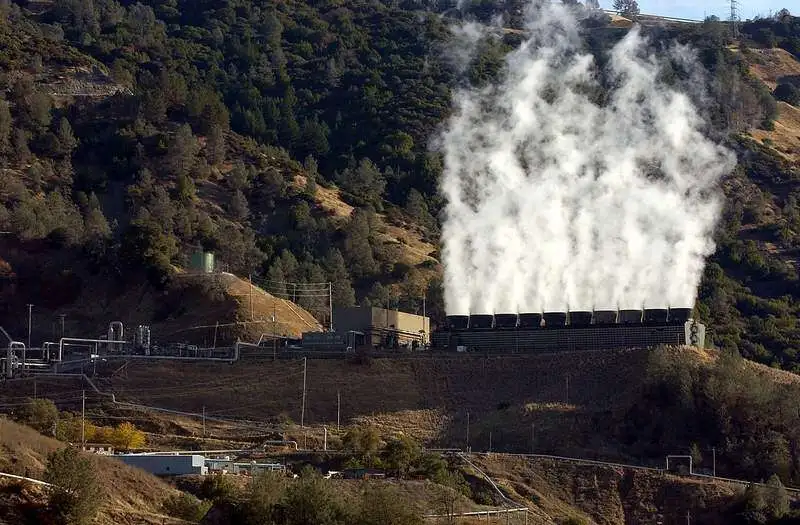Copyright Santa Rosa Press Democrat

Sonoma County has been awarded state money to study where envisioned next-generation power plants could go in the North Coast’s sprawling Geysers geothermal field with the least impacts and potentially the fastest project timelines. The $1.36 million commitment, unveiled Sept. 29, was one of three totaling $4.56 million from the California Energy Commission’s Geothermal Grant and Loan Program. The funds are expected to be awarded in January, according to John Mack, who manages Permit Sonoma’s Natural Resources Division. “We’re going to proactively look at the landscape across Lake, Mendocino and Sonoma counties for the best areas for geothermal with the least cultural and environmental impacts and best siting,” Mack said. The grant period is three years. The plan includes working with the National Renewable Energy Laboratory to develop a cutting-edge three-dimensional model of what’s underground, map what’s above ground via LiDAR (light detection and ranging) data, figure out what sites might be the most compatible with geothermal development, visit the sites to confirm results, conduct community-engagement meetings and work with tribes on monitoring high-potential geothermal sites. “Hopefully, that will give us a lot of information for projects going forward,” Mack said. That information is set to guide future updates to the county’s zoning and general plan. The signing of Assembly Bill 1359 last year allows geothermal project applicants to opt for county handling of review, replacing a previous law that required a county to have an approved geothermal general plan element to do so. The California Geologic Energy Management Division (CalGEM) is still developing regulations for that new law. Grant partners are Mendocino County and Sonoma Clean Power, which is working with Mendocino and Sonoma counties on the Geysers-focused geothermal opportunity zone, or GeoZone. Chevron New Energies, Eavor Technologies and Ormat Technologies have floated low-water-use, closed-loop ideas for GeoZone projects, but there haven’t been related applications for exploratory or use permits in recent years, Mack said. The Geysers field includes Lake County, but it’s not participating in the grant, Mack said. Sonoma Clean Power has been making a pitch to Lake County, Clearlake and Lakeport officials about joining the GeoZone effort along with being supplied by the alternative provider of electricity. Clearlake City Council voted to not join at this time, partly because the majority wanted more time to understand the geothermal effort and opt-out process. Lake County Board of Supervisors and Lakeport City Council are set to vote Oct. 21. Mack told the Journal in March that this grant would be part of Sonoma County’s more forward-thinking approach to geothermal in recent years, recognizing the need for 24/7 renewable energy to meet climate goals. Of three California bills Sonoma Clean Power had been backing in the recently ended session to speed GeoZone projects, only one became law. AB 526, which would have created a statewide geothermal strategy, like the one for wind power, died in committee. Gov. Gavin Newsom signed AB 531, which allows geothermal projects of all sizes to be permitted through the California Energy Commission, rather than the current 50-megawatt threshold. However, Newsom vetoed AB 527, writing that would have delayed AB 1359 regulations in progress and added fees for exploration projects. “Following enactment of AB 1359, the federal government created a categorical exemption for NEPA for geothermal exploration,” Sonoma Clean Power CEO Geof Syphers wrote in an email, referring to the federal environmental protection law. “This made geothermal exploration far easier on federal lands and specifically geothermal prospects in states like Nevada and Utah. AB 527 sought to offer a similar streamlined approach to projects in California to make the state competitive for developers considering where to site projects. With AB 527’s veto, the GeoZone and the rest of California will have to work harder to attract investment.” California produces the most electricity from geothermal in the U.S., according to the U.S. Energy Information Administration. Last year, that amounted to nearly 1.9 gigawatts, which was 70% utility-scale geothermal power and 4% of total statewide electricity generation. California Energy Commission last year called for doubling the geothermal output by 2035, reaching at least 3 gigawatts by 2030. The GeoZone concepts call for adding 600 megawatts to the 725 megawatts currently produced from The Geysers. Calpine, the largest producer at that field, has been bringing online a new 25 megawatt plant, starting with 7 megawatts this summer. Jeff Quackenbush joined North Bay Business Journal in May 1999. He covers primarily wine, construction and real estate. Reach him at jeff@nbbj.news or 707-521-4256.



